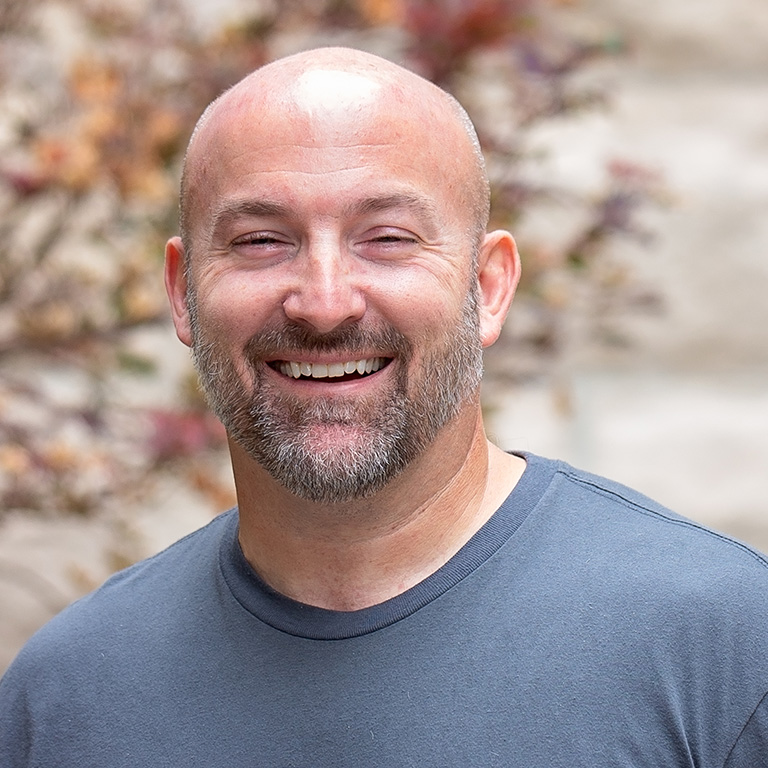Transitioning from almost 30 years of active-duty military service to becoming a civilian, I struggled with my sense of purpose and in many ways felt alienated. During this time of transition, Lauren Daugherty, arts-based wellness experiences manager and art therapist at the Sidney and Lois Eskenazi Museum of Art, invited me and a group of Center for Rural Engagement staff to an open studio wellness experience. I hadn’t engaged with art since high school, but I was drawn to the intentionality of art-making as a result of this experience. It was a way I could express myself through nonverbal means and lessened some of the negative feelings I felt during my transition. I thought, “if art can somehow assist me, maybe it could also assist other veterans who are struggling.”
The military profession upholds values of stoicism, stability, and endurance. When service members return home, these same values can create discord when faced with the challenges of reintegration. Managing the mental and emotional stress of combat experiences with that of new and changing career and family dynamics can be overwhelming, and veterans and their families need tools to address this stress in a positive way.
Together with the team at Eskenazi Museum of Art, we developed Creative Arts for Veterans (CAV), a program that connects the healing power of the arts with veterans here in Indiana. Indiana ranks 16th in the nation in veteran population size and many of our veterans reside in rural communities that may not have access to mental health care or other forms of stress relief and support in promoting their wellbeing. This inspired us to connect with statewide and local organizations that support veterans and their families and found a strong interest in this kind of collaboration.
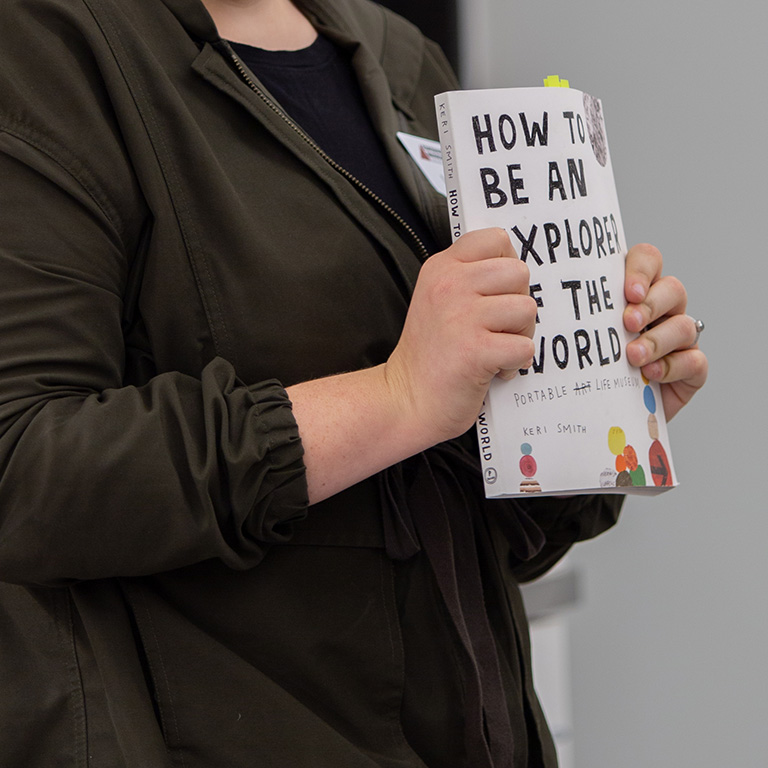
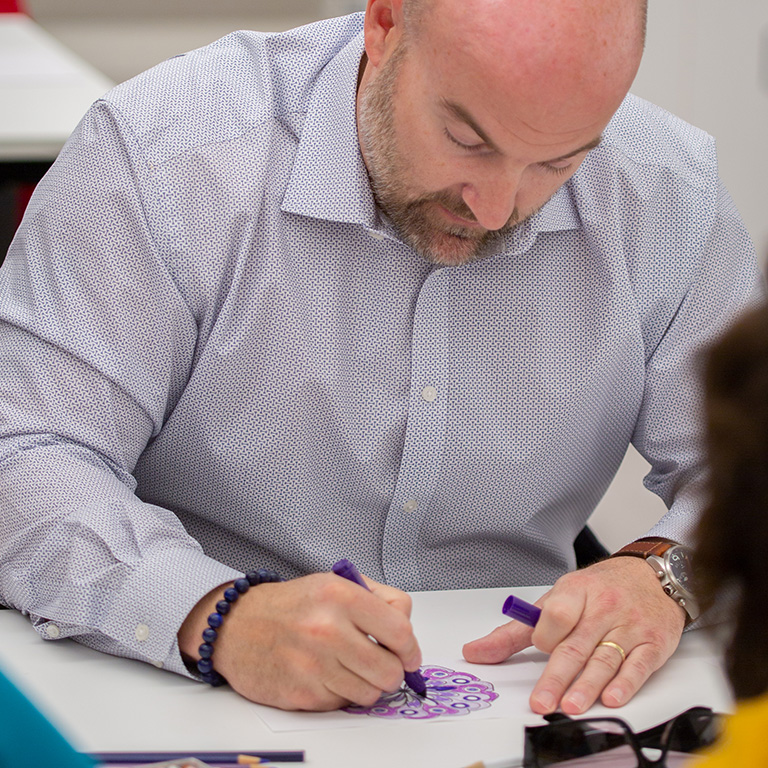
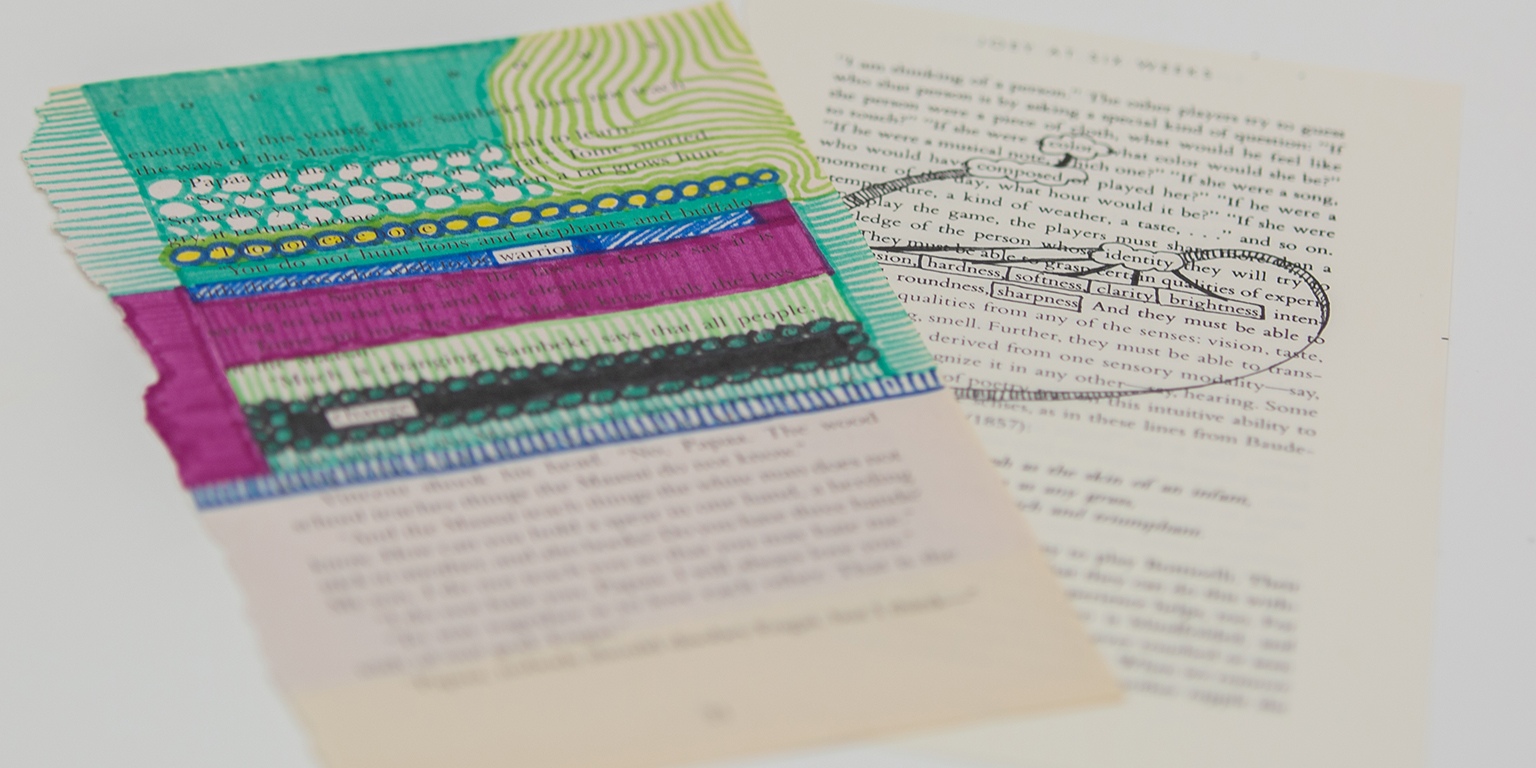
Arts-based wellness is a form of stress relief and self-care. It may be done with therapeutic intention, but it differs from art therapy which follows a therapist-guided care plan. Arts-based wellness is a great opportunity for groups of people who may share similar experiences or gain additional benefit from the social environment of a group setting and the process of art-making.
We started with a hybrid program, offering eight-week sessions for veterans held synchronously with an in-person location, thanks to the Elks Lodge in Rushville. Regardless of location, participants reported a decrease in isolation and an increase in their ability to identify, understand, and regulate emotions effectively following the series.
This initial series has grown into a catalog of options that include one-day workshops, series, presentations, and even family-focused events to support reintegration with a holistic approach. This fall, we’re collaborating with Anam Cara Stables in LaPorte to connect these arts-wellness activities with the healing presence of horses to promote a sense of safety, connection, and resiliency among the veterans who participate.
These arts organizations will provide programming based on their area of expertise...to expose veterans to different art modalities, providing a sense of connection, and establishing a supportive environment where veterans can express themselves.
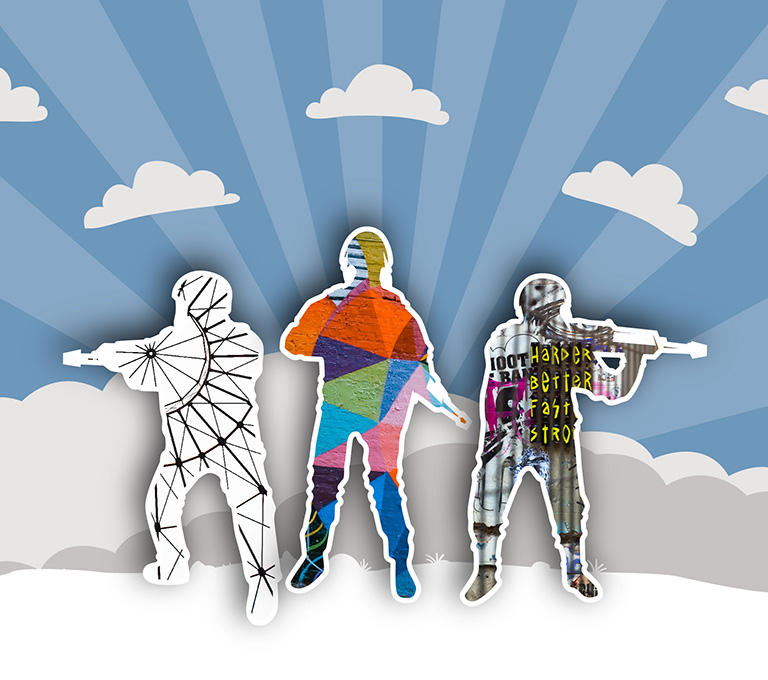
We are also tailoring programs to underrepresented veterans, such as women. Women make up seven percent of Indiana’s veteran population, and 20 percent of current U.S. military members are women. The CAV initiative led us to Melissa Bellanceau, a retired Marine who recently completed her master’s degree in social work and found her own peace in creating art following her military retirement. In partnership with Melissa, we have been able to connect with rural residents who are veterans, as well as a significant number of women who are veterans. Knowing that women experience a greater sense of isolation as underrepresented veterans, we are committed to serving them through this unifying initiative.
Creative Arts for Vets is a great example of the ways we can activate resources shared across Indiana—including higher education, state and local programs, and nonprofits—to improve the lives of rural residents who have dedicated their service to our country.


